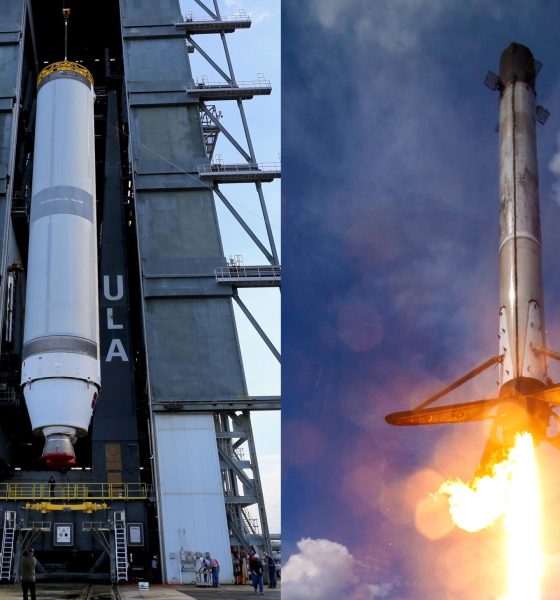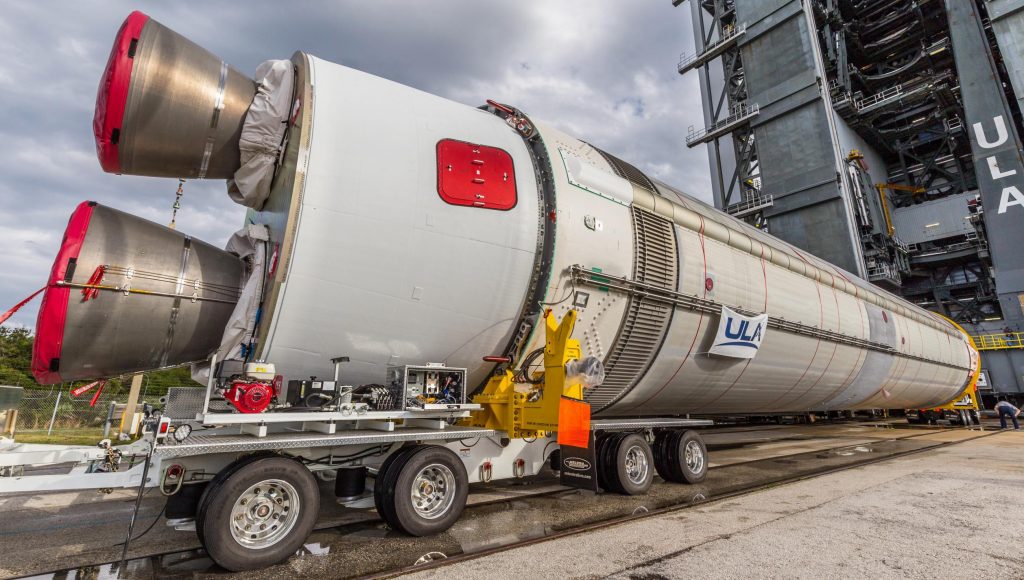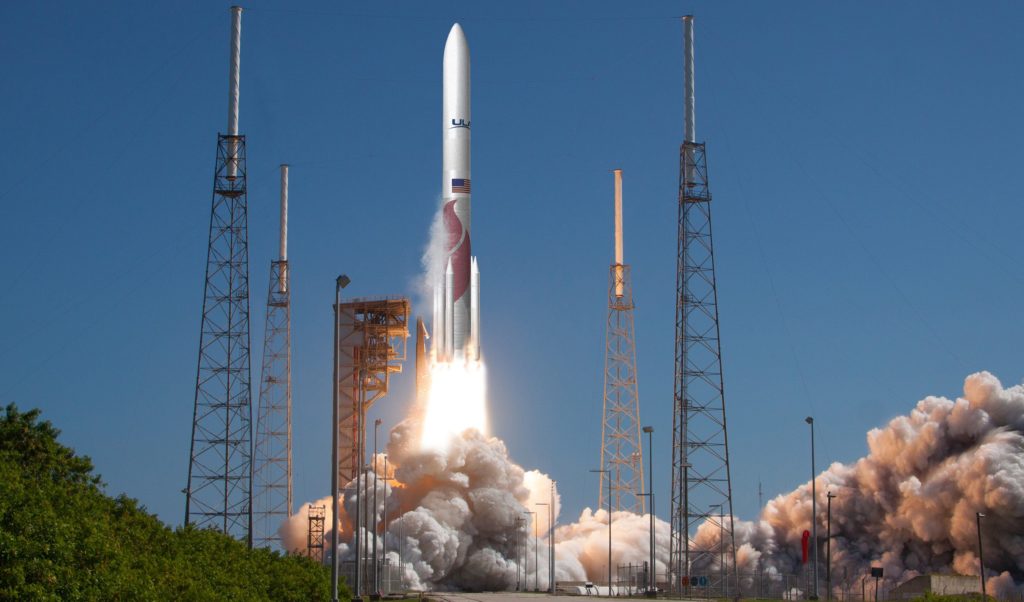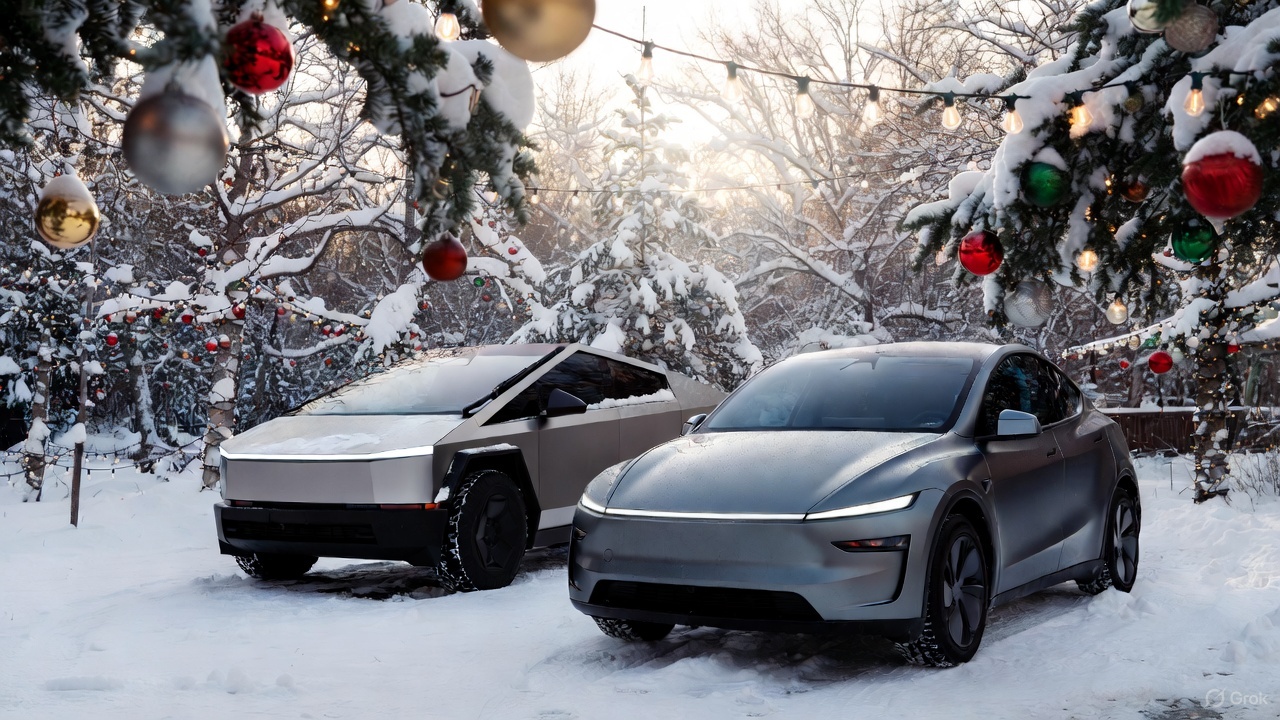

News
SpaceX Falcon 9 crushes next-gen ULA Vulcan rocket on cost in first competition
The United Launch Alliance’s (ULA) next-generation Vulcan Centaur rocket appears to have made it through what could be described as its first real competition with SpaceX and its Falcon 9 workhorse.
The US Space Force (or Air Force) awarded both rockets two launch contracts each on March 9th, marking the second award under “Phase 2” of a new National Security Space Launch (NSSL; formerly Evolved Expendable Launch Vehicle or EELV) agreement. The culmination of a multi-year competition, NSSL Phase 2 calcified in late 2020 when the US military ultimately chose ULA and SpaceX as its primary launch providers for the better part of the next decade.
The final Phase 2 agreement followed Phase 1, in which the USAF committed up to $2.3 billion to assist Blue Origin, Northrop Grumman, and ULA in their efforts to develop future military launch capabilities. SpaceX submitted a proposal but didn’t win funds. Even though the ULA-SpaceX dichotomy was already a more or less fixed outcome before the competition even began, the US military still managed to dole out almost $800 million to Blue Origin and Northrop Grumman before announcing that neither provider had been selected for Phase 2.
Notably, as part of Phase 1, ULA is on track to receive nearly $1 billion in USSF/USAF aid to develop its next-generation Vulcan Centaur rocket and ensure that it meets all of the military’s exacting, unique requirements. SpaceX, on the other hand, received a sum total of $0 from that opaque slush fund to meet the exact same requirements as ULA.
For Phase 2, the US military arbitrarily split the roughly two-dozen launch contracts up for grabs into a 60/40 pile. Even more bizarrely, the USAF did everything in its power to prevent two of the three rockets it had just spent more than $1.7 billion to help develop from receiving any of those two or three-dozen available launch contracts – all but literally setting $800M of that investment on fire. Short of comical levels of blind ineptitude, verging on criminal negligence, the only possible explanation for the US military’s behavior with NSSL Phase 1 and Phase 2 is a no-holds-barred effort to guarantee that ULA and its Vulcan Centaur rocket would have zero real competition.
The arbitrary 60:40 split of the final Phase 2 contract ‘lot’ further supports that argument. A government agency objectively interested in securing the best possible value and redundancy for its taxpayer-provided money would logically exploit a $1.7B investment as much as possible instead of throwing two-thirds of its ultimate value in the trash. On its own, a block-buy scenario – even with a leading goal of selecting two providers – is fundamentally inferior to an open competition for each of the dozens of launch contracts at hand.
Further, selecting the block-buy option and failing to split those contracts 50:50 makes it even clearer that the USAF’s only steadfast NSSL Phase 2 goal was to guarantee ULA enough Vulcan launch contracts for the company to be comfortable and (most likely) not lose money on a rocket that has yet to demonstrate an ability to compete on the commercial launch market.

Amazingly, despite multiple handicaps in the form of a 60:40 contract split and what amounts to a $1B subsidy that explicitly disadvantages its only competitor, ULA’s Vulcan rocket still appears to be ~40% more expensive than SpaceX’s Falcon 9. In the latest round of NSSL Phase 2 contracts, seemingly the first in which ULA’s Vulcan Centaur rocket was selected, SpaceX’s Falcon 9 received two East Coast launch contracts worth slightly less than $160M, averaging out to less than $80M each.
Outfitted with four of a possible zero, two, four, or six strap-on solid rocket boosters (SRBs), Vulcan Centaur received two launch contracts for $224M – an average of $112M each. Assuming ULA wins exactly 60% (~15) of the Phase 2 launch contracts up for grabs and receives no more than $1 billion in USAF development funding through NSSL Phase 1, some $67 million will have to be added to the cost of each announced Vulcan launch contract to get a truly accurate picture. In the case of the rocket’s first two contracts, the real average cost of each Vulcan Centaur launch could thus be closer to $179M ($112M+$67M).

According to ULA CEO Tory Bruno, both Vulcan missions are to “high-energy orbits,” whereas a USAF official told Spaceflight Now that SpaceX’s two Falcon 9 contracts were to “lower-energy orbits.” In Vulcan’s defense, if Bruno’s “high-energy orbit” comment means a circular geostationary orbit (GEO) or a very heavy payload to an elliptical geostationary transfer orbit (GTO), it’s possible that SpaceX would have had to use Falcon Heavy to complete the same contracts. Against Falcon Heavy’s established institutional pricing and excluding ULA’s $1B Phase 1 subsidy, Vulcan Centaur is reasonably competitive.
Ultimately, even with several significant cards stacked against it, SpaceX appears likely to continue crushing entrenched competitors like ULA and Arianespace on cost while still offering performance and results equivalent to or better than even than their “next-generation” rockets.

News
Tesla 2025 Holiday Update: Here’s what it includes, and what it’s missing

Tesla has finally announced the features for the 2025 Holiday Update, which includes a wide variety of new inclusions that are both functional and just for fun.
The new features are plentiful, but there were a handful of things we were expecting to see based on what we know. We don’t want to sound ungrateful, because there are a lot of great new things on the way with this update.
Here’s what was included:
Grok with Navigation Commands (Beta)
Grok will now have the ability to add and edit navigation destinations, which is a drastic improvement considering Tesla owners had to use their standard voice commands for this in the past.

The utilization of Grok will likely improve the navigation experience by offering some insight into your destination, including reviews and other points of interest nearby.
It will be enabled by using Grok’s “Assistant” personality.
Tesla Photobooth
“Turn your car into a photobooth! Take selfies from inside your Tesla & give yourself a makeover with fun filters, stickers, and emojis. Share with others right from the Tesla app.”
This feature will be available within the Toybox.
Dog Mode Live Activity
When using Dog Mode to keep your four-legged friend comfortable in the car, you’ll now be able to check in on them as it will share periodic snapshots of the cabin, along with live updates on temperature, battery, and climate conditions.

Dashcam Viewer Update
Dashcam clips are awesome, but they’re void of a lot of information, which could be useful in some instances, especially if there is an accident.

Now, there will be additional details included on each Dashcam clip, like speed, steering wheel angle, and Self-Driving state.
Santa Mode
New graphics, trees, and a lock chime are now available.

Light Show Update
A new Light Show, called Jingle Rush, will be available.
Custom Wraps and License Plates in Colorizer
Colorizer will now be known as “Paint Shop” in the Toybox. You will now be able to personalize your Tesla Avatar with window tints, custom wraps, and license plates. Preloaded designs will be available, but owners will be able to use their USB Flash Drives to create one that suits their style.

Navigation Improvements
Changing the order of your destinations will be easier through a new “Favorites” tab, and Home and Work can now be set by dropping a pin.
There will also be “Suggested Destinations,” which will be determined through recent trips and habits while parked.
Supercharger Site Map
Perhaps the most significant feature of the Holiday Update, Tesla is adding a 3D view of select Tesla Superchargers by tapping “View Site Map.”
When navigating to a location with this capability, the site layout, live occupancy, and nearby amenities will be available. Drivers will also be able to choose which stall to Supercharge.

This is only available at a handful of locations currently, but it will expand to more Superchargers as it becomes more robust.
Automatic Carpool Lane Routing
Navigation will include an option to utilize carpool lanes. Your route will automatically choose the carpool lane when eligible.
Phone Left Behind Chime
If the in-car occupant detection system does not see anyone in the car and there is a phone key, or if a phone is left inside the cabin, your Tesla will chime a few seconds after the doors close.
Charge Limit Per Location
You can now save a charge limit for the current location while parked and it will be applied automatically the next time you charge there.
ISS Docking Simulator
In a SpaceX collaboration, Tesla has added this game to its in-car Arcade:
“Become an astronaut and prove your skills by docking with the International Space Station. Control & guide the rocket in this 3D docking simulator game using a set of controls based on actual interfaces used by NASA astronauts.”
Additional Improvements
-
Enable or disable wireless phone charging pads in Controls > Charging (S3XY) or Controls > Outlets & Mods (Cybertruck)
-
Add Spotify tracks to your queue right from the search screen & scroll through large Spotify playlists, albums, podcasts, audiobooks & your library seamlessly, without paging
-
Take the vibes up another level with rainbow colors during Rave Cave. Accent lights color will change along with the beats of your music. App Launcher > Toybox > Light Sync
-
Lock Sound now includes Light Cycle from Tron Mode. Toybox > Boombox > Lock Sound
What’s Missing
There are a handful of features we expected to see with the Holiday Update, but were not included.
Banish Feature
Tesla has been teasing the Banish functionality for quite a few years, but evidently, it is not quite there yet.
Banish will allow owners to get out of their vehicle at the entrance of their destination, and the car will go find a spot and park itself. Some refer to it as “Reverse Summon.”
Apple CarPlay
With all of the rumors regarding Apple CarPlay and then the evidence that Tesla was working to bring CarPlay to vehicles, we really expected it to come with the Holiday Update.
We’re not upset it’s not here, though. Tesla’s in-car UI is significantly better, at least in our opinion.
Parking Spot Selection
One of the biggest gripes about the new Arrival Features with Full Self-Driving v14 is that choosing a set parking spot is not available. This is especially frustrating for Tesla owners who rent or live in townhouse neighborhoods or apartment complexes with assigned parking.
Tesla seems to be working on this based on the release notes for v14.2, where it said future capabilities would include Parking Spot Selection.
News
Man credits Grok AI with saving his life after ER missed near-ruptured appendix
The AI flagged some of the man’s symptoms and urged him to return to the ER immediately and demand a CT scan.

A 49-year-old man has stated that xAI’s Grok ended up saving his life when the large language model identified a near-ruptured appendix that his first ER visit dismissed as acid reflux.
After being sent home from the ER, the man asked Grok to analyze his symptoms. The AI flagged some of the man’s symptoms and urged him to return immediately and demand a CT scan. The scan confirmed that something far worse than acid reflux was indeed going on.
Grok spotted what a doctor missed
In a post on Reddit, u/Tykjen noted that for 24 hours straight, he had a constant “razor-blade-level” abdominal pain that forced him into a fetal position. He had no fever or visible signs. He went to the ER, where a doctor pressed his soft belly, prescribed acid blockers, and sent him home.
The acid blockers didn’t work, and the man’s pain remained intense. He then decided to open a year-long chat he had with Grok and listed every detail that he was experiencing. The AI responded quickly. “Grok immediately flagged perforated ulcer or atypical appendicitis, told me the exact red-flag pattern I was describing, and basically said “go back right now and ask for a CT,” the man wrote in his post.
He copied Grok’s reasoning, returned to the ER, and insisted on the scan. The CT scan ultimately showed an inflamed appendix on the verge of rupture. Six hours later, the appendix was out. The man said the pain has completely vanished, and he woke up laughing under anesthesia. He was discharged the next day.
How a late-night conversation with Grok got me to demand the CT scan that saved my life from a ruptured appendix (December 2025)
byu/Tykjen ingrok
AI doctors could very well be welcomed
In the replies to his Reddit post, u/Tykjen further explained that he specifically avoided telling doctors that Grok, an AI, suggested he get a CT scan. “I did not tell them on the second visit that Grok recommended the CT scan. I had to lie. I told them my sister who’s a nurse told me to ask for the scan,” the man wrote.
One commenter noted that the use of AI in medicine will likely be welcomed, stating that “If AI could take doctors’ jobs one day, I will be happy. Doctors just don’t care anymore. It’s all a paycheck.” The Redditor replied with, “Sadly yes. That is what it felt like after the first visit. And the following night could have been my last.”
Elon Musk has been very optimistic about the potential of robots like Tesla Optimus in the medical field. Provided that they are able to achieve human-level articulation in their hands, and Tesla is able to bring down their cost through mass manufacturing, the era of AI-powered medical care could very well be closer than expected.
News
Tesla expands Model 3 lineup in Europe with most affordable variant yet
The Model 3 Standard still delivers more than 300 miles of range, potentially making it an attractive option for budget-conscious buyers.

Tesla has introduced a lower-priced Model 3 variant in Europe, expanding the lineup just two months after the vehicle’s U.S. debut. The Model 3 Standard still delivers more than 300 miles (480 km) of range, potentially making it an attractive option for budget-conscious buyers.
Tesla’s pricing strategy
The Model 3 Standard arrives as Tesla contends with declining registrations in several countries across Europe, where sales have not fully offset shifting consumer preferences. Many buyers have turned to options such as Volkswagen’s ID.3 and BYD’s Atto 3, both of which have benefited from aggressive pricing.
By removing select premium finishes and features, Tesla positioned the new Model 3 Standard as an “ultra-low cost of ownership” option of its all-electric sedan. Pricing comes in at €37,970 in Germany, NOK 330,056 in Norway, and SEK 449,990 in Sweden, depending on market. This places the Model 3 Standard well below the “premium” Model 3 trim, which starts at €45,970 in Germany.
Deliveries for the Standard model are expected to begin in the first quarter of 2026, giving Tesla an entry-level foothold in a segment that’s increasingly defined by sub-€40,000 offerings.
Tesla’s affordable vehicle push
The low-cost Model 3 follows October’s launch of a similarly positioned Model Y variant, signaling a broader shift in Tesla’s product strategy. While CEO Elon Musk has moved the company toward AI-driven initiatives such as robotaxis and humanoid robots, lower-priced vehicles remain necessary to support the company’s revenue in the near term.
Reports have indicated that Tesla previously abandoned plans for an all-new $25,000 EV, with the company opting to create cheaper versions of existing platforms instead. Analysts have flagged possible cannibalization of higher-margin models, but the move aims to counter an influx of aggressively priced entrants from China and Europe, many of which sell below $30,000. With the new Model 3 Standard, Tesla is reinforcing its volume strategy in Europe’s increasingly competitive EV landscape.








